WESTBURY HOUSE RESTORATION

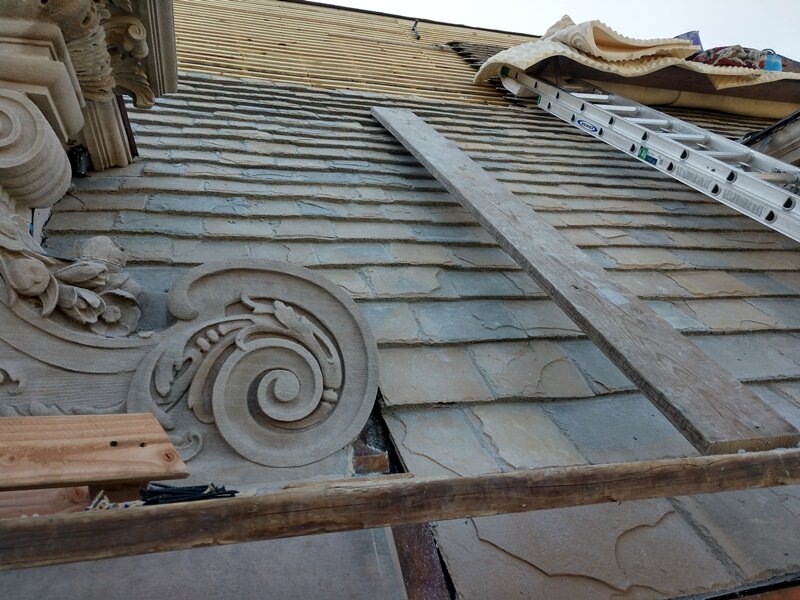
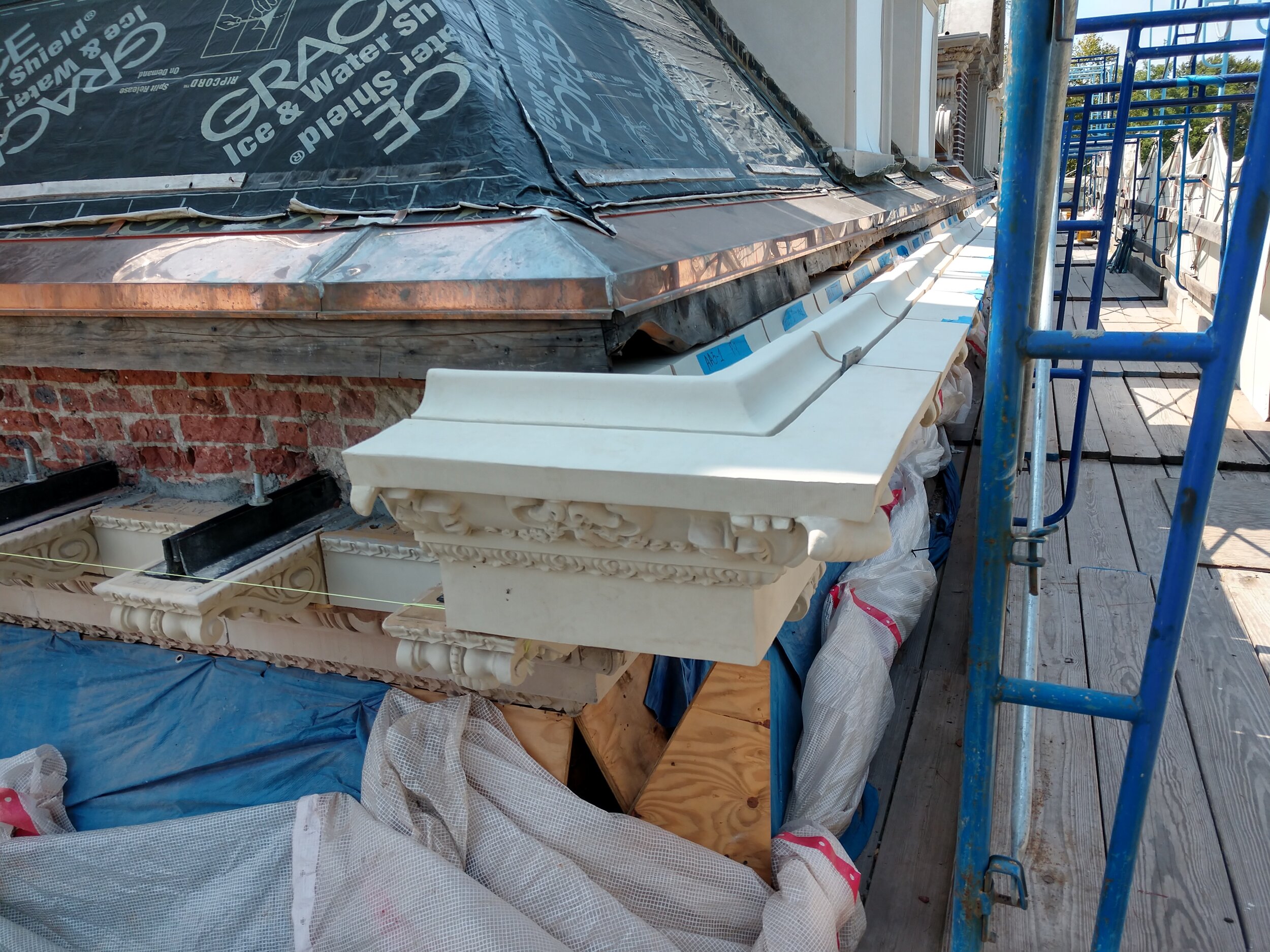
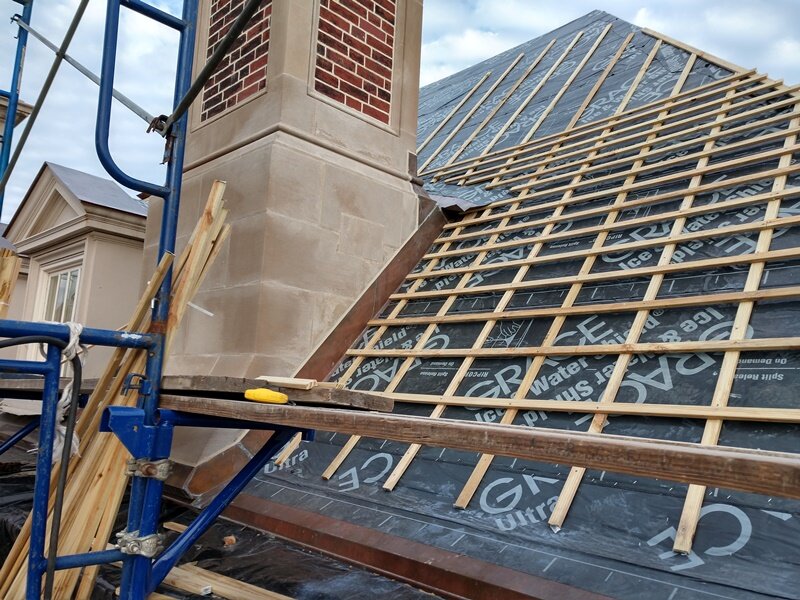
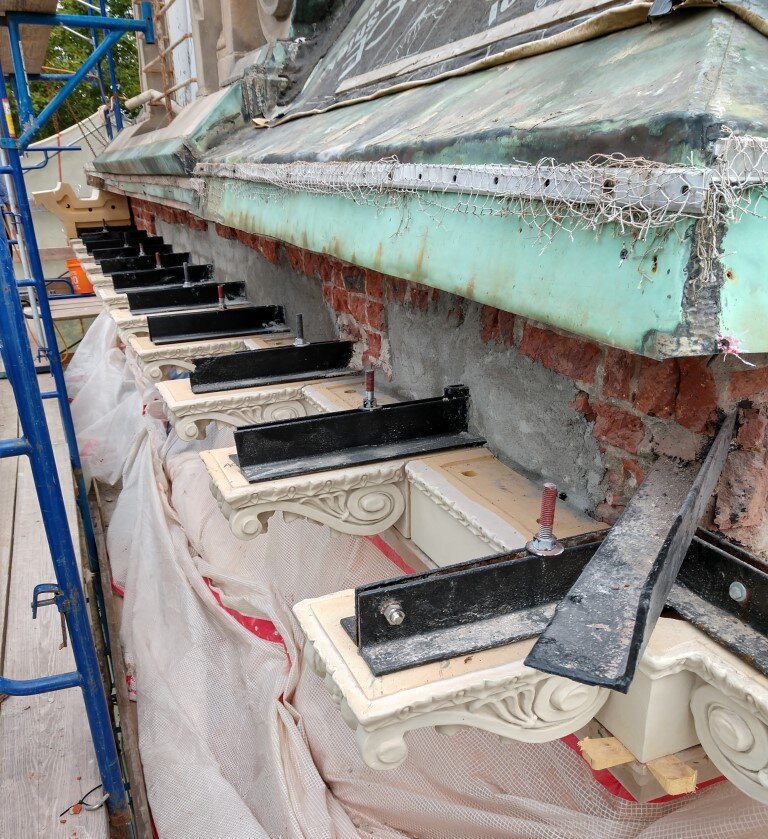
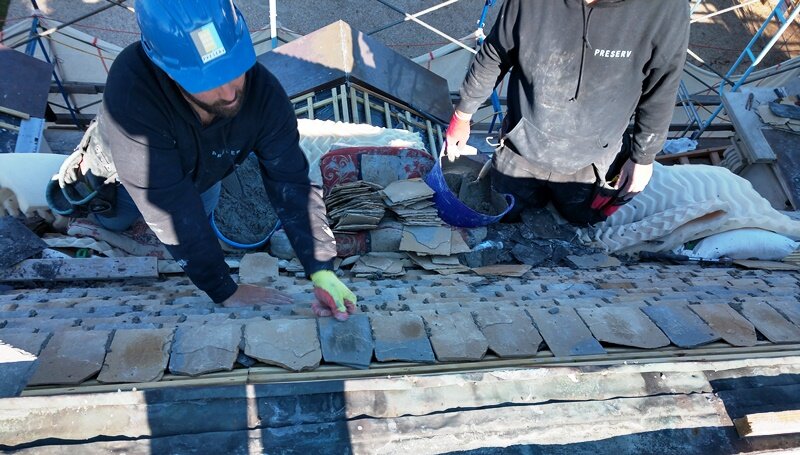

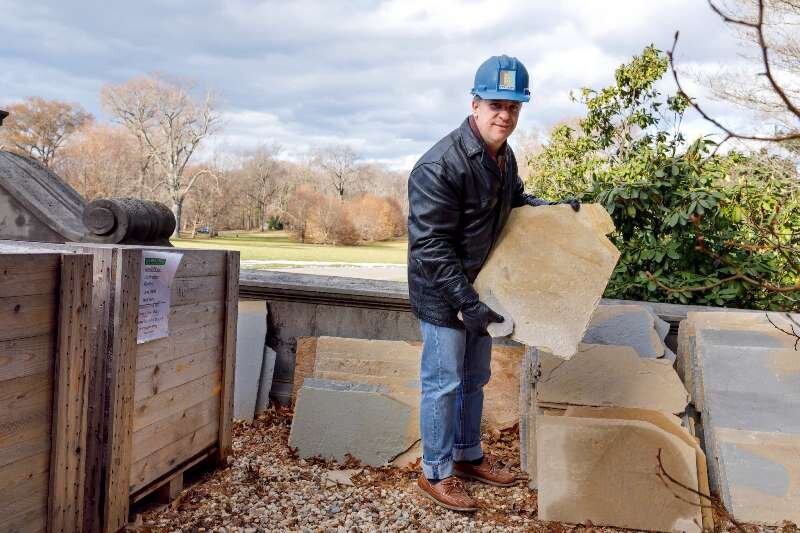
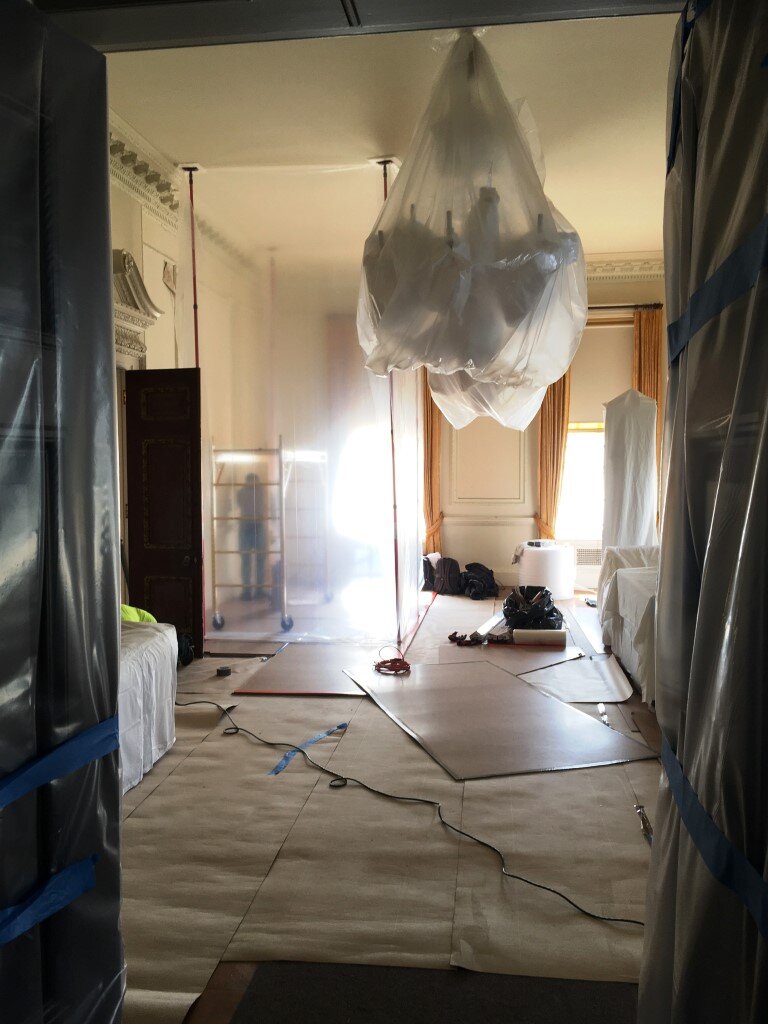
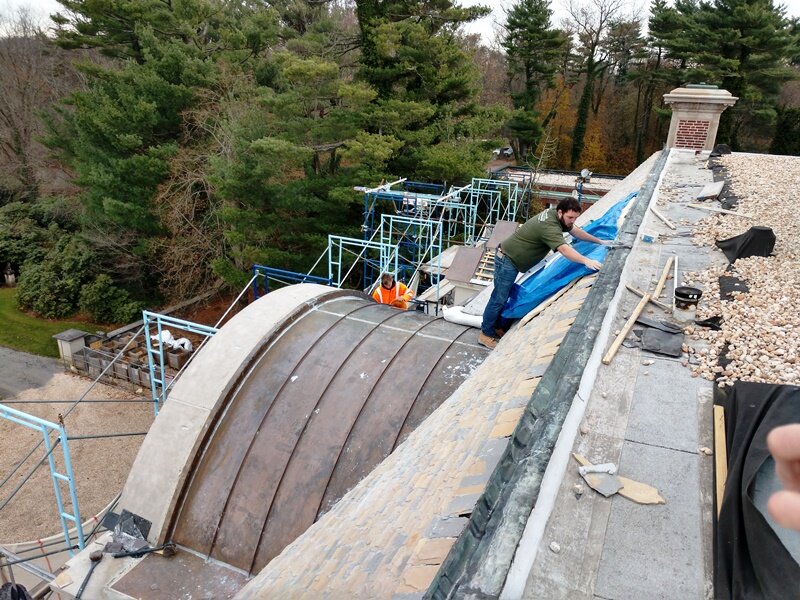
PROGRESS UPDATE AS OF AUGUST 2022
Despite work and travel restrictions that affected the British slaters’ arrival, the Westbury House roof and cornice restoration have been completed. The British team of slaters from Claude N. Smith Ltd., the supplier of 27,000 hand-cut Collyweston slates, arrived in the fall to install new slates on the north slope of the house. The team of four slaters began the task of sorting slates into graduated sizes – the largest at the bottom or eaves section to the smallest at the ridge or top edge. The slaters then installed a grid of squared strips of wood called “battens.” The slates are nailed into the strips creating an air space between the slate and actual roof, and allowing moisture to evaporate and prolonging the life of the limestone slate. Expertise is required to select the right slate for its thickness and color to create a harmonious visual effect. The slates will eventually turn a golden color as they are exposed to oxygen, most likely why designer George A. Crawley selected the material. Of the four slaters, Tom Measures’ great great grandfather, Arthur Osborn, was one of two roofers sent by the original slate supplier William Close, to lend support to the American roofers who were unfamiliar with the material. Tom was incredibly moved knowing he was working on the same project as his forebearer over a hundred years ago.
On the domestic side, the terra cotta cornice directly below the roof was a challenging installation. Gladding McBean, located in northern California, fabricated eight hundred pieces in varying patterns and sizes recreated from molds using original components in stable condition. Ensuring that all the pieces were properly aligned was a painstaking process as industry standards were unknown at the turn of the twentieth century. Spacing and placement varied from one façade to the other. Vigilant attention to detail was imperative to get the installation just right.
Part of the complex drainage system for Westbury House includes interior leaders (downspouts) that left the exterior façade of the free of that feature. Thermographic testing of walls in Mr. Phipps’ Study and the White Drawing Room showed high moisture levels indicating active leaking. It was an unseen threat in the Study which is clad in stately paneling while a plaster wall in the White Drawing Room had been marred by water damage. Special work tents were erected to contain dust while discreet areas of the walls in both rooms were removed. The deteriorated cast iron pipes were replaced with PVC and soundproofing and the walls carefully restored to a pristine appearance.
Eighteen Georgian period mirrors (1750 - 1830) were removed from exterior walls to protect against vibrations from demolition of the failing terra cotta cornice. It was a rare opportunity to examine the elaborate gilded wood frames to determine cleaning and repair protocols with conservator Lucie Kinsolving.
This is the most significant restoration project in our history, and the only of its kind in American. Preserving Old Westbury Gardens is no small feat, but it is one of great importance.
